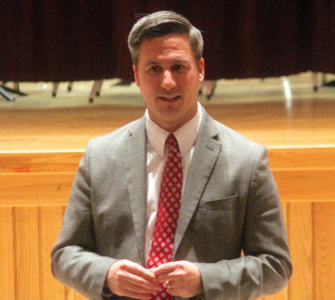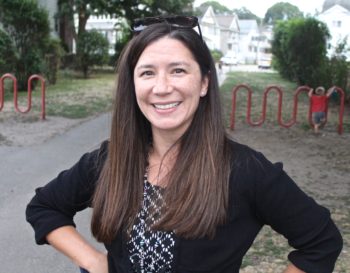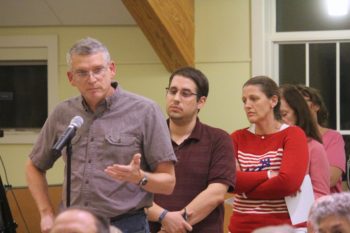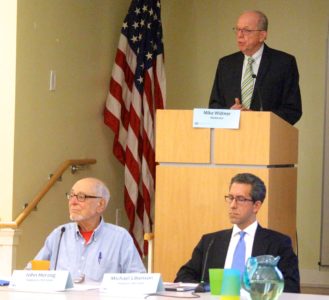Photo: The Klemm family – Paul Jr., Paul, Marybeth, and Emily – who own and run Ohlin’s Bakery in Cushing Square.
After 101 years in Belmont, the legendary Ohlin’s Bakery at 456 Common St. is leaving its longtime home in Cushing Square for good, according to a Facebook message from its owners.
Saying they are “extremely shocked and disappointed,” owners Paul and Marybeth Klemm said despite “trying our hardest to reopen in our original location” … “[w]e were told by our landlord that this is no longer possible.”
In the message written on the store’s social media site Thursday, Nov. 10, the couple who live in Burlington said the decision “has been very depressing and we feel so lost and sad.”
Comments to the news from fans of the store and friends of the Kleems are supportive of the business which celebrated its centennial in 2015.
“This is oh so devastating for your family and all of your loyal customers,” wrote Andrea Taylor. “We will always support you!!”
The bakery, which was recognized yearly for having Boston’s best donuts, has been closed since an early morning explosion on March 15 heavily damaged the bakery section of the store.
Despite working with the landlord and insurance representatives, the cost of repairing the building and modernizing the aging equipment and ovens to bring them up to current building and fire codes was prohibitive. Even a GoFundMe page set up by a long-time friend of the business to raise $50,000 could not close the gap.
The Kleems are now appealing to customers and friends to help the couple find a new location close to the original site. So far they have looked at many places in Belmont, Watertown, Cambridge, and Arlington with the hope of securing a storefront with ample parking “and REASONABLE and AFFORDABLE RENT!”
So far, fans are requesting the store open shop in Waltham and Arlington. But mostly, customers such as Maggie Schulz told the Kleems that “[a]nywhere you go, my family will be there!”



